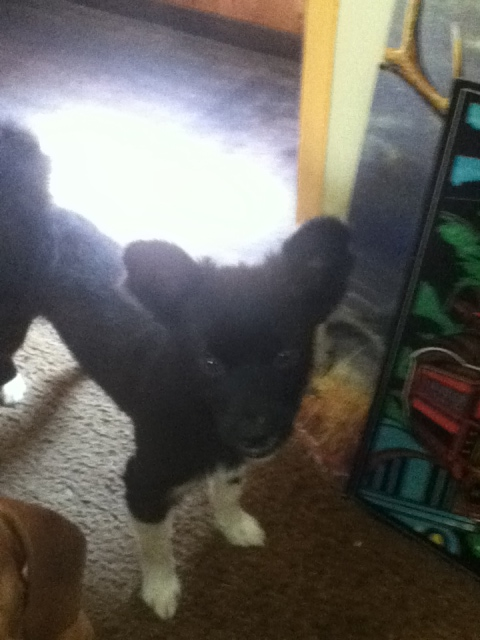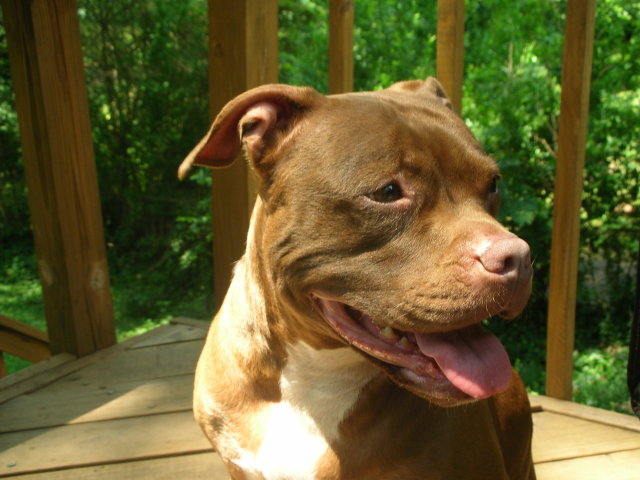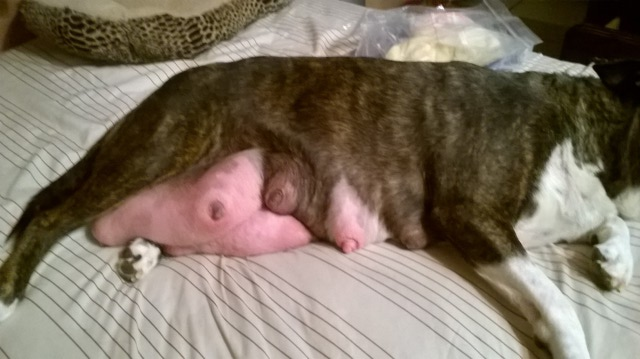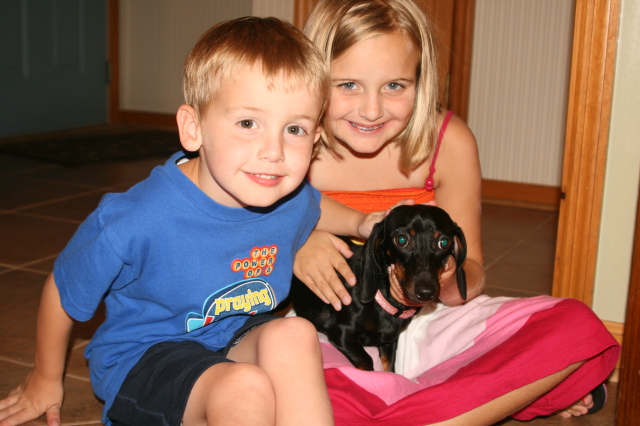QuestionHi,
I own a three year old un-neutured male maltese cross. My brother recently moved in and he owns a two year old un-neutured male rottweiler. When the dogs are together they don't fight, they get along well. The only problem is that my dog pees everywhere! Is there a way I can prevent him from marking this territory all over the house?
AnswerHi Heather,
If the urinating is in small increments, then you are probably correct in that it is marking, also known as territorial marking.
Dogs that mark are generally fearful dogs - that is, fearful of the other dog in the home and marking due to elevated anxiety levels that can be measured as elevated corisol levels in the bloodstream or in the stool - or dogs that are willing to fight and defend the territory which they mark. In either case, consider that the dogs are either marking out of fear/anxiety or willing to defend territory, and neither bodes well for the relationship between the dogs unless something is done to alleviate the anxiety and/or need to defend one's territory.
First, I would ask why your and your brother's dogs are not neutered? If you don't intend to mate them I want to at least try to change your mind by making you aware that there are a lot of health benefits to neutering, such as reduced risk of prostate cancer, reduced risk of anal tumours, reduced risk of testicular tumours, reduced risk of enlarged prostate and reduced risk of urine flow problems, to name a few.
Neutering may reduce marking as much as 50%; but this percentage depends largely on the time after the onset of puberty for the dog. The longer after the onset of puberty (in other words, the older the dog...), the less effect neutering may have on your dog's marking behaviour. It's best to ask a vet knowledgeable about canine behaviour about this point.
However, as I mentioned, there are still many benefits to neutering, including reduction in the hormone testosterone for male dogs, and thus a decrease in the need to fight; and, if a fight occurs, generally a decrease in the magnitude/intensity of the fight as well as a decrease in the length of time of any fighting (in other words, a fight may end sooner). Fights between neutered males generally are not as strong in intensity nor do they last as long as fights between non-neutered males.
While I'm aware that you said that the dogs are seeming to get along well, I've also picked up on the fact that you said that your brother "recently" moved in with his Rottie, and given the fact that marking is already going on at what sounds like a pretty intense level, trouble between the dogs may be a-brewing.
After neutering, it may take several months (usually about 90 days) for the testosterone produced by the dogs' testes to go down to levels which are normal for that particular neutered dog, so within that time frame you may not see significant changes, but only gradual ones with more significant changes apparent after the 90 day (more or less...) period. And, for some dogs, there are no significant behavioural changes, again depending in part on how old the dog is and how far away from the age of onset of puberty. Again, this is a point about which to ask a vet knowledgeable about canine behaviour.
If you decide to neuter the dogs, be aware that some training may be required in order to fully break the habit of marking. Marking that has gone on for a long time does, indeed, become a habit for many dogs, one that may be hard to break without professional assistance and guidance.
I feel that a couple of paragraphs of caution are warranted here. Being that your dog is a Maltese and your brother's dog a Rottweiler, there's a big discrepancy in size between the two. Although it may seem to you as if the dogs are getting along well, I feel that the marking is a red flag that deserves a word of caution to both you and your brother to not leave the dogs alone unsupervised for any period of time, not even for a moment; and also not to give the dogs any valuable rsources such as highly valued chew toys, bones, or the like in the presence of the other. I would suggest doing so only when you are sure of the relationship between the two after several months, at least; and for now only with the two separated by a gate or crated. Defense of a valued item can happen in a split second and in that time one of the dogs could be badly hurt, or worse. It won't matter who "started" it, only that a dog, or both dogs, could get hurt.
The marking is a clear signal to me that one of the dogs may be afraid of the other; that both may be afraid of the other; or that both are willing to defend the territory they mark, regardless of the discrepancy in size between them.
Here are some links below my signature for some further reading on marking. The one by Myrna Milani is especially useful, although all are informative and there are links too for eliminating the odour from marking. Happy reading!
Best regards,
Madeline Friedman, M.A.
www.ny-njDogTrainer.com, Volunteer at Allexperts.com
Links for further reading on this topic:
http://www.paw-rescue.org/PAW/PETTIPS/DogTip_Marking.php
http://www.paw-rescue.org/PAW/PETTIPS/DogTip_Cleaning.php
www.odordestroyer.com
www.planeturine.com
www.dogurine.com
www.dog-urine.com
www.justrite.com
www.rx4carpets.com/dog_urine.html
www.iloveproklean.com/dogurine.html
www.sea-yu.com (Petrotech odor eliminator)
http://www.ashburnfarmvet.com/Web_site_client_education/Medical_Procedures_and_S...
http://www.canines.com/library/solutions/marking.shtml

 Diarrhea in Nursing Bitches
QuestionAtrix & Pup
QUESTION: My Champion Mi
Diarrhea in Nursing Bitches
QuestionAtrix & Pup
QUESTION: My Champion Mi
 ideas of what breed dog this is?
Question
dog dog
i was wondering if anyone
ideas of what breed dog this is?
Question
dog dog
i was wondering if anyone
 Coping with Incontinence
Question
Abi
Abi, my 8 year old female spayed pit bull,
Coping with Incontinence
Question
Abi
Abi, my 8 year old female spayed pit bull,
 Engorged Breasts
Question
mamma
My Friends Dog Had A Litter About
Engorged Breasts
Question
mamma
My Friends Dog Had A Litter About
 1 year old daschund
Question
our new member
We recently got a one year old
1 year old daschund
Question
our new member
We recently got a one year old